 Global ambassadors of ecotourism gather in Nanjing
Global ambassadors of ecotourism gather in Nanjing
 Taiwan woman marries into Kazak family, 100 sheep plus a flat as dowry
Taiwan woman marries into Kazak family, 100 sheep plus a flat as dowry
 College girls take graduation photos under water in Chongqing
College girls take graduation photos under water in Chongqing
 Cartoon: Xi and football
Cartoon: Xi and football
 Chinese influence sweeps ROK
Chinese influence sweeps ROK
 Post-90s beauty boxer grapples four men
Post-90s beauty boxer grapples four men
 3,000-year-old tea town through lenses
3,000-year-old tea town through lenses
 22 archaeological sites along Silk Road in China
22 archaeological sites along Silk Road in China
 Football babies, Samba dancers embrace 'World Cup'
Football babies, Samba dancers embrace 'World Cup'
 Beautiful scenery along China’s Grand Canal
Beautiful scenery along China’s Grand Canal
 |
| Jia Yang (file photo /www.ce.cn) |
CHILDHOOD DREAM
Jia was born in 1970, the year China sent its first satellite, "Dongfanghong I", into orbit, launching the country into the space age.
When he was 8 years old, he read a book about the solar system and became obsessed with astronomy.
He entered the National University of Defense Technology, majoring in solid rocket engines, and got his masters and doctoral degrees in the China Academy of Space Technology (CAST).
He began work for CAST in 1995, when China's market economy was beginning to boom. Many aerospace experts were lured to private or foreign-funded enterprises. A popular jingle at the time - "Making missiles earns less than selling tea eggs" - highlighted low salaries in the sector.
"I was thinking about leaving too," says Jia, "but exploring the universe was my childhood dream."
Over eight years, he helped to develop the Shenzhou-1 to Shenzhou-4 spacecrafts, Beidou navigation satellites, the China-Brazil Earth Resources Satellite, and the Ocean Satellite.
When his daughter was born in 2000, he named her "Sihang", meaning focusing on aerospace.
The Chang'e lunar exploration program began in 2004. In July that year, Jia was asked to develop China's first lunar rover.
He had to simulate the environment of moon's surface. What sort of traction would the rover have on the lunar soil? Would it slip? Would the wheels sink? These questions had to be answered on earth.
How to simulate the lunar soil? After much research, Jia found that ash from a volcanic cluster in northeast China's Jilin Province was similar to the lunar soil samples brought back by the U.S. Apollo missions.
Jia went to the provincial capital Changchun and traveled through snow-covered hills for several hours to Jingyu County. He was taken to a factory in the mountains, where the ash was used to make bricks. He bought several trucks of volcanic ash back to Beijing.
In 2011, the team tested the moon rover in a remote desert in northwest China's Gansu Province, transporting drinking water hundreds of kilometers as they continued their trials.
 |  |
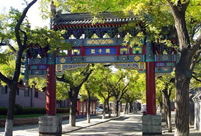 Featured hutongs in Beijing
Featured hutongs in Beijing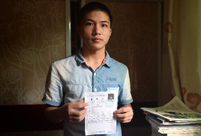 Separate college entrance exam
Separate college entrance exam Flash mob dance
Flash mob dance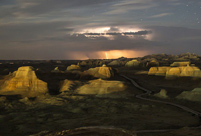 Picturesque scenery of Ghost City
Picturesque scenery of Ghost City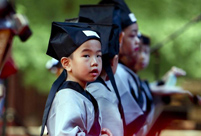 Children attend First Writing Ceremony
Children attend First Writing Ceremony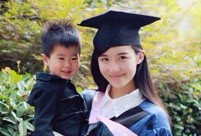 Female master poses for graduation photos with son
Female master poses for graduation photos with son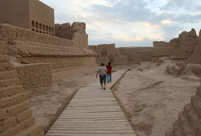 Silk Road, China's Grand Canal listed as World Heritage Sites
Silk Road, China's Grand Canal listed as World Heritage Sites PKU students imitate famous paintings in real-person photos
PKU students imitate famous paintings in real-person photos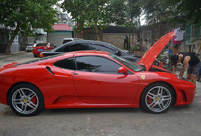 Chinese 'Slumdog Millionaire'
Chinese 'Slumdog Millionaire' Islands in S. China Sea better shown on new vertical atlas of China
Islands in S. China Sea better shown on new vertical atlas of China Girl takes father’s portrait to travel the world
Girl takes father’s portrait to travel the world Images of Xi'an: Part one
Images of Xi'an: Part one In Pictures: Female fans of World Cup
In Pictures: Female fans of World Cup Top 20 hottest women in the world in 2014
Top 20 hottest women in the world in 2014  China's top 10 representative architectures
China's top 10 representative architecturesDay|Week|Month